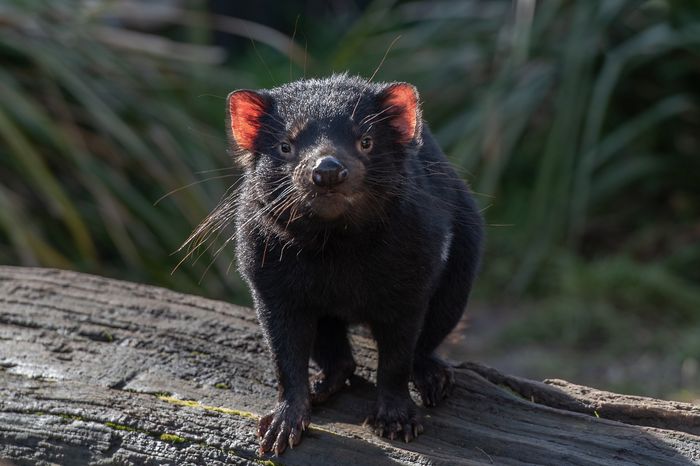Why are captive penguins dying from malaria?
One of the deadliest diseases does not just affect humans

What do humans and captive penguins have in common? This question sounds like the set up to a bad joke, but actually, there is at least one commonality: they are both badly affected by malaria, which is caused by small parasites of the Plasmodium genus. These invade the host’s red blood cells and rapidly multiply, causing flu-like symptoms that can lead to further complications and death if untreated.
Most people think about malaria as a human disease, affecting 241 million and causing over 600,000 deaths in 2020, and specifically think of Plasmodium falciparum, the variety overwhelmingly prevalent on the African continent. But malaria isn’t limited to humans: there are over 200 malaria species that infect mammals, reptiles, and birds. Mortality rate is usually comparatively low – after all, it isn’t good for the parasites if their hosts die too quickly! This is only true, however, for species that have coevolved with the Plasmodium parasite; in captivity, up to 80% of penguin colonies can die per malaria outbreak.
“Up to 80% of penguin colonies can die per malaria outbreak”
Malaria is caused by small, single-celled parasites (protozoa). These parasites are transmitted by mosquitoes, injected into the bloodstream of the host when the mosquito takes its bloodmeal. With a detour via the liver, they then enter the red blood cells and multiply, bursting out and reinvading every few days – destroying the red blood cells in the process. This is the asexual stage of malaria infection. Sometimes, when the parasites invade red blood cells, they instead differentiate into gametocytes, or the sexual stage. When these are taken up by the mosquito during its bloodmeal, the gametocytes burst out of the red blood cells and fuse together.
The first case of malaria observed in captive penguins was at the London Zoo in 1926, when the death of a king emperor penguin was diagnosed as avian malaria – but it is far from being the only one. Dudley Zoo lost almost three quarters of their penguins in January of this year and it’s far from unusual – a 2014 study showed that 12.5% of zoos in the northern hemisphere had had avian malaria.
So why does this happen? Malaria cases depend on two things. The first is the presence of a “reservoir host”. These are usually native birds who have coevolved with the malaria parasite and, despite being infected, often don’t show symptoms. The second is mosquitoes, who allow transmission from host to host – in this case from reservoir host to captive penguin. This means that malaria cases in captive penguins tend to be seasonal and correspond to when mosquito density is highest – in the northern hemisphere, this is late summer to early autumn. The penguins that survive tend to become more resistant to malaria as their immune systems can then better recognise and fight against the parasite.
What are zoos doing to prevent malaria cases? Treating penguin populations with antimalarial drugs requires precise timing: too early, and they might unnecessarily suffer from side effects and not be able to acquire any immunity for the following season. Too late, and the penguins will die – by the time that clinical signs are present, it’s often too late to save the birds. Doses of chloroquine (one of the first antimalarials discovered) and primaquine (one of the antimalarials still in use in humans today) are often front-line treatments, as well as frequent monitoring of the penguin populations to check their parasitaemia (the number of parasites present in their blood).
However, these treatments have negative effects not directly linked to the parasite, mainly the stress that the birds undergo when they are being frequently handled (to administer the drugs, to take blood, etc). In fact, it’s been suggested that one of the reasons that there is a higher mortality in captive penguins infected with malaria than wild penguins is due to the stress they’re under in zoos.
Aside from drug treatment, another solution is to keep the penguins inside during peak mosquito season. Using fine mesh nets to avoid mosquitoes being able to enter the exhibit is another possibility – though an expensive one, as the nets have to be carefully maintained – as is checking all stagnant pools of water for evidence of mosquitos and cleaning them.
Today, avian malaria is still a huge cause of death in captive penguin colonies, but through developing new drugs with fewer side effects and testing methods that are less stressful, this will be able to change in the future.
 News / Fitz students face ‘massive invasion of privacy’ over messy rooms23 April 2024
News / Fitz students face ‘massive invasion of privacy’ over messy rooms23 April 2024 News / Cambridge University disables comments following Passover post backlash 24 April 2024
News / Cambridge University disables comments following Passover post backlash 24 April 2024 Comment / Gown vs town? Local investment plans must remember Cambridge is not just a university24 April 2024
Comment / Gown vs town? Local investment plans must remember Cambridge is not just a university24 April 2024 News / Climate activists smash windows of Cambridge Energy Institute22 April 2024
News / Climate activists smash windows of Cambridge Energy Institute22 April 2024 News / Copycat don caught again19 April 2024
News / Copycat don caught again19 April 2024






